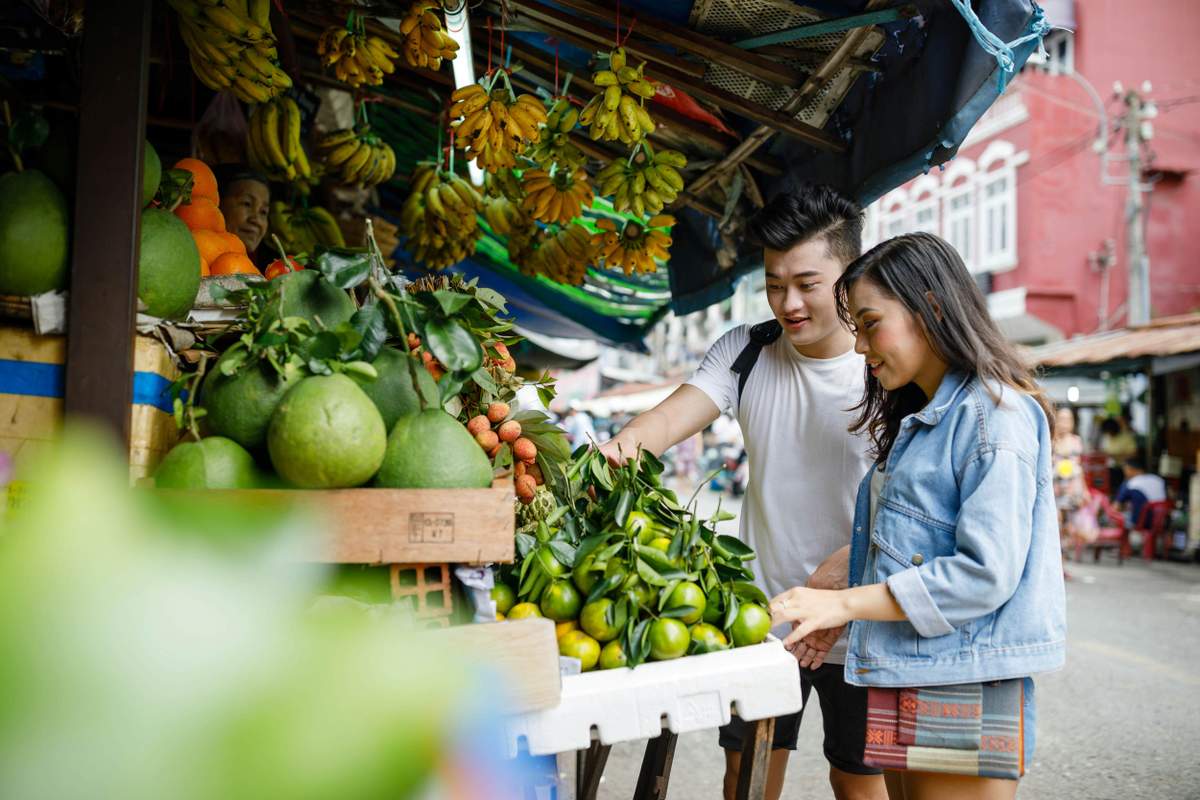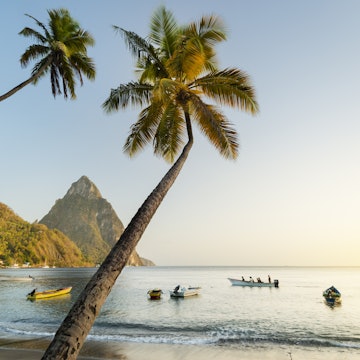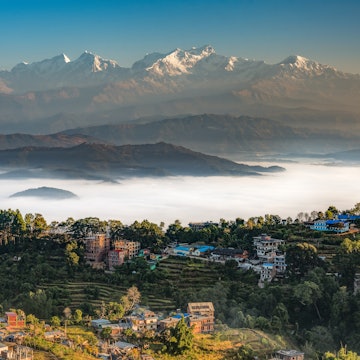

Plan your travels around Vietnam with this guide to transportation. Jon Chica/Shutterstock
Wrapped around the east coast of mainland Southeast Asia like a mythical Naga serpent, Vietnam naturally lends itself to overland travel. Its two biggest cities – Hanoi and Ho Chi Minh City (HCMC) – are divided by 1100km of rice paddies, tropical jungles, historic townships, wartime relics, national parks and sandy beaches, and most people plot an itinerary that takes in both of these lively hubs.
How you traverse the lush, green Vietnamese countryside is up to you. The famous Reunification Express train line linking Hanoi and HCMC is the obvious choice, with great views and stops all along the Vietnamese coast, but you can also hopscotch around by local bus or zip around by motorcycle, taking in places off the main tourist trail. Traveling by boat is a particularly evocative way to explore, tracing Vietnam’s meandering rivers and buzzing out to islands offshore.
If you're in a neighboring country, there’s no need to fly to Vietnam. Trains and buses provide easy access from China, with smooth connections from Nanning through to Hanoi, and from Kunming to Hanoi via Lao Cai. If you’re heading south or west, international buses run daily to Ho Chi Minh City (HCMC) from Phnom Penh, Siem Reap and Sihanoukville in Cambodia and to Hue from Savannakhet in Laos.
Whichever route you plan to take around the country, here’s our guide to getting around Vietnam.
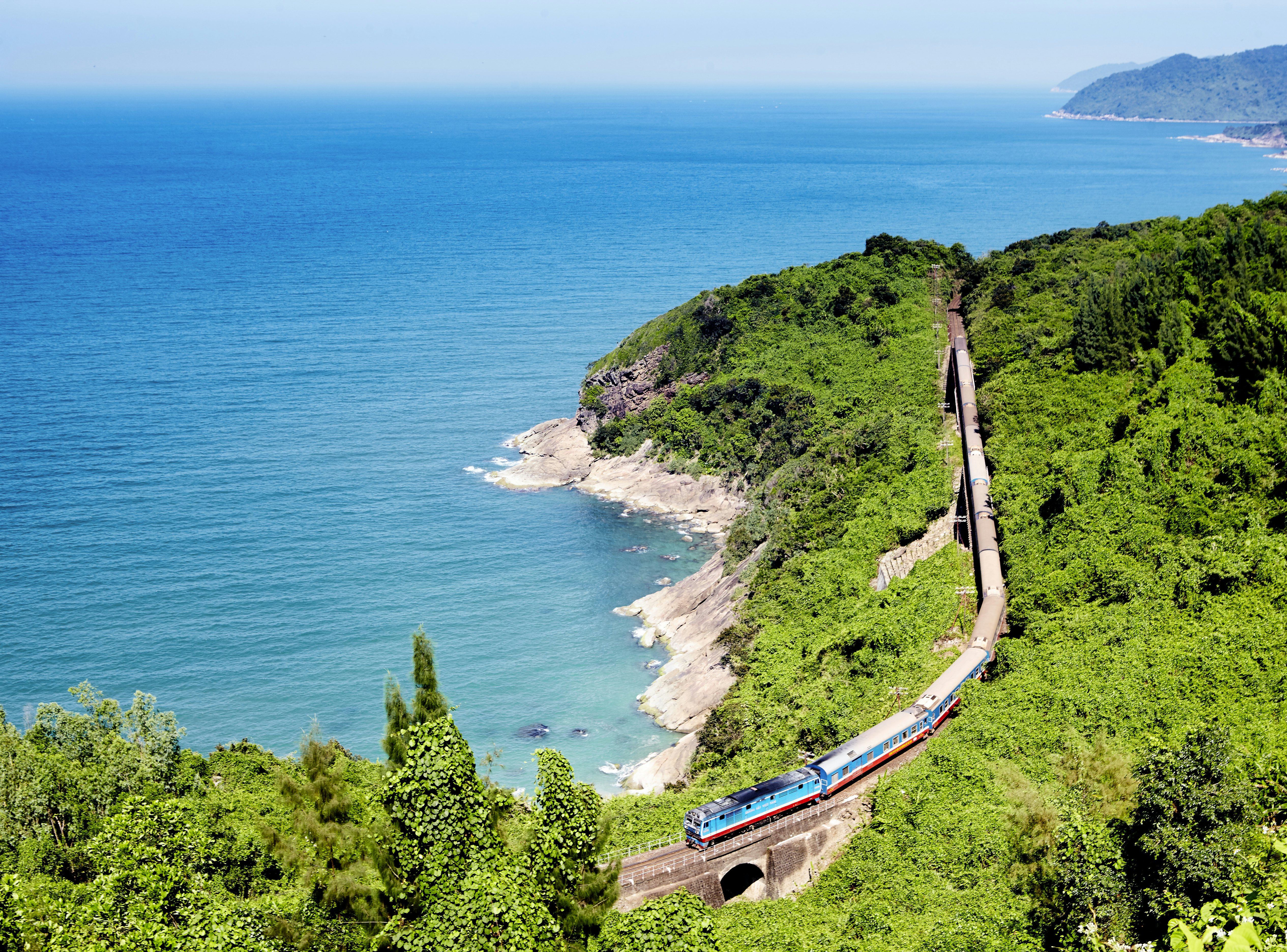
Ride a Reunification Express train between HCMC and Hanoi
If you’re looking to tick off both Hanoi and HCMC and the many sights in the center of the country, there’s no better way to explore than the train. The country’s main railway line weaves along the coast between these two teeming cities, stopping almost everywhere you’d want to break the journey.
Trains also run from Hanoi to Haiphong (for excursions in and around Halong Bay) and Lao Cai, about an hour's drive from Sapa, Vietnam’s busiest trekking hub. If you’re bound for China, trains connect Hanoi to Kunming, via Lao Cai, and Nanning, via the border town of Lang Son, with onward services to Beijing.
Trains classified as SE (Super Express) are the smartest and fastest, while those referred to as TN (Thong Nhat) are slower, older and less comfortable. The term “Reunification Express” is used as an umbrella term for many different trains running between Hanoi and HCMC – the SE1 and SE3 leave Hanoi in the evening, reaching HCMC in the morning on day three. To arrive in Hanoi in the morning, take the evening SE4 or SE2 from HCMC.
Choose from different train classes and tickets
There are four main ticket classes on trains – hard seat, soft seat, hard sleeper and soft sleeper – in increasing order of cost and comfort. These classes are also split into air-conditioned and non-air-conditioned options, with a higher fare for AC seats and berths. Some trains have wi-fi, but connection speeds can be slow (you are better off getting a local data SIM for your mobile).
Hard sleeper carriages have berths in three tiers; the top berth is the cheapest, and the lower berth is the most expensive. Soft sleepers generally have two tiers, with four berths per compartment, all at the same price. The Man in Seat 61 has an excellent online guide to the different classes of train in Vietnam.
Great for daytime journeys, “soft seats” are airplane-style chairs that recline, usually arranged in rows of four, with two chairs on either side of the aisle. “Hard seats” are essentially wooden benches; expect these carriages to be busy and hazy with cigarette smoke. Use some clothes as an improvised cushion to avoid a bruised behind!
Tickets can be bought at railway stations a few days in advance of travel, or online 60 to 90 days in advance. When booking online, many travelers use the booking sites Bao Lau and 12Go.Asia; booking via the official Vietnam Railways website is only possible with a Vietnamese credit card.

Buses travel almost everywhere in Vietnam
Bus travel in Vietnam can be either convenient and comfortable (when traveling between major cities) or slow and cramped (when traveling in the backwaters), but it’s rarely expensive. In popular traveler hangouts such as Hanoi and HCMC, you’ll see signs advertising “Open Tour" or "Open Ticket" buses – these services run between major cities, and you can hop-on and hop-off the bus at any major city along the way. You’ll pay more than for ordinary buses, but routes start and stop in conveniently central locations.
Normal bus services run from dedicated bus stations, and there may be more than one station in each town, serving different destinations, so always check which station you need to go to. Most have dedicated ticket offices and prices, and departure times are clearly displayed; buy tickets a day in advance to be certain of securing a seat.
In larger cities, main bus stations are often out of the city center. Have your hotel (or someone Vietnamese-speaking) ask where the nearest pick-up point is and what time you should be there, which might save you a time-consuming trip to the bus station.
Different bus companies offer different levels of comfort. At the top of the scale are deluxe sleeper services between major cities, with minimal stops en route. You’ll get a reclining seat or even a seat that converts into a horizontal bed, but you’ll need earplugs to sleep through the onboard karaoke sessions and screenings of music videos and martial arts films. Companies such as the Sinh Tourist and Mai Linh Express offer online booking.
In rural areas, buses stop repeatedly to drop off and pick up passengers, so journeys can take an age, and buses can be crammed to bursting. Whichever class you travel in, road travel in Vietnam is never fast – don’t expect to cover much more than 50km per hour due to the sheer volume of motorbikes, trucks, pedestrians and livestock on the roads.

Motorbikes offer freedom for adventurous travelers
Riding the length of Vietnam is a lifelong dream for many seasoned bikers, and a busy industry has grown up supplying motorcycles to travelers attempting the journey between Hanoi and HCMC. The ride is certainly rewarding, but with local driving conditions, it’s not for novices, and some of the bikes available for rent or purchase are in poor condition; check over machines advertised in hostels and hotels thoroughly before you agree to buy.
Exploring the mountainous northwest is an even bigger adventure, with challenging switchbacks and dramatic vistas appearing around every corner, but you’ll need a more powerful machine to tackle the steep inclines and potholes. Along the coast and in tourist hubs, it’s easy to rent a low-powered scooter or motorcycle from cafes, hotels and travel agencies for local exploring for around US$10 per day.
Rental agreements tend to be somewhat informal, and you’ll often have to leave your passport as security. Seek out rental firms that offer insurance and provide a formal rental agreement (so you know what’s covered in the event of an accident), and always wear a motorcycle helmet – it’s a legal requirement. As an alternative to hiring your own wheels, some local riders are willing to provide driver services on two wheels for around US$30 per day.
If you have an accident in Vietnam while riding without a valid license (and an International Driving Permit), your travel insurance is unlikely to cover your costs – including the cost of damage to the vehicle, to yourself, and to other vehicles and people. Many travelers wing it, but this means taking a significant risk.
Rent a car and driver for hassle-free road transport
Self-drive rental cars are almost impossible to find in Vietnam, but it’s easy to rent a vehicle with a driver who will also double as an informal tour guide and (hopefully) take you to places you would otherwise miss. You'll definitely want to check their ability to communicate in English beforehand. You also won’t have to worry about getting the right driving license or extra car insurance.
Travel agencies in tourist areas offer all sorts of ready-made car-and-driver packages but it’s just as easy to arrange a custom itinerary. Bank on paying US$60 to US$150 per day plus petrol; your driver will cover their own food and accommodation. Split the trip with other travelers to bring down costs. A 2WD car is fine for lowland areas, but you’ll need a 4WD for the mountainous north.

Cycling is a great way to explore Vietnam’s backroads
Cycling can be a delightful great way to get around Vietnam, so long as you stick to quiet rural roads and avoid the crowded highways. Much of the country is agreeably flat, and bike workshops are easy to find if you have a flat tire or mechanical issue (just don’t expect to find parts for foreign-made bikes).
Bikes can be rented for local exploring from hotels and travel agencies wherever travelers gather, but the quality and mechanical sophistication of bikes varies. For long-distance trips, join a cycle tour or rent a higher quality bike through a cycle-tour company such as Vietnam Cycling or Indochina Bike Tours. To cut out long highway rides, bicycles can be transported on the roof of many buses or in train baggage compartments.
Domestic flights aren't always reliable
If you’re short on time, domestic flights are a reasonably economical way to get from A to B in Vietnam, but you’ll be churning out extra carbon. Cancellations are common, so avoid leaving a short gap between a domestic flight and an international connection (travel a day early if you can).
Airlines operating domestic routes in Vietnam include Bamboo Airways, Pacific Airlines, Vietjet Air and Vietnam Airlines (who have the most reliable schedules and the best safety rating).

Go by boat to reach the islands or explore the mighty Mekong
Many of Vietnam’s winding rivers are navigable, but the most important thoroughfare for boats is the mighty Mekong River, which splits into a maze of smaller channels as it reaches the East Sea. Locals use passenger boats to get around all over the country, but tourists tend to stick to organized day cruises from HCMC, Hoi An, Nha Trang, Danang, Hue and Tam Coc.
Boats and ferries also run to islands offshore, including tropical Phu Quoc in the south, the islands scattered around Nha Trang Bay, the Cham Islands near Hoi An in central Vietnam, and – of course – the myriad islands and outcrops in Halong Bay and neighboring Bai Tu Long Bay. It's possible to reach the Con Dao Islands by boat from Soc Trang, Vung Tau or Can Tho on the mainland.
Note that sea transport can be disrupted during the May to December typhoon season, particularly in August and September; monitor the weather reports and be ready to change your plans if a storm approaches.
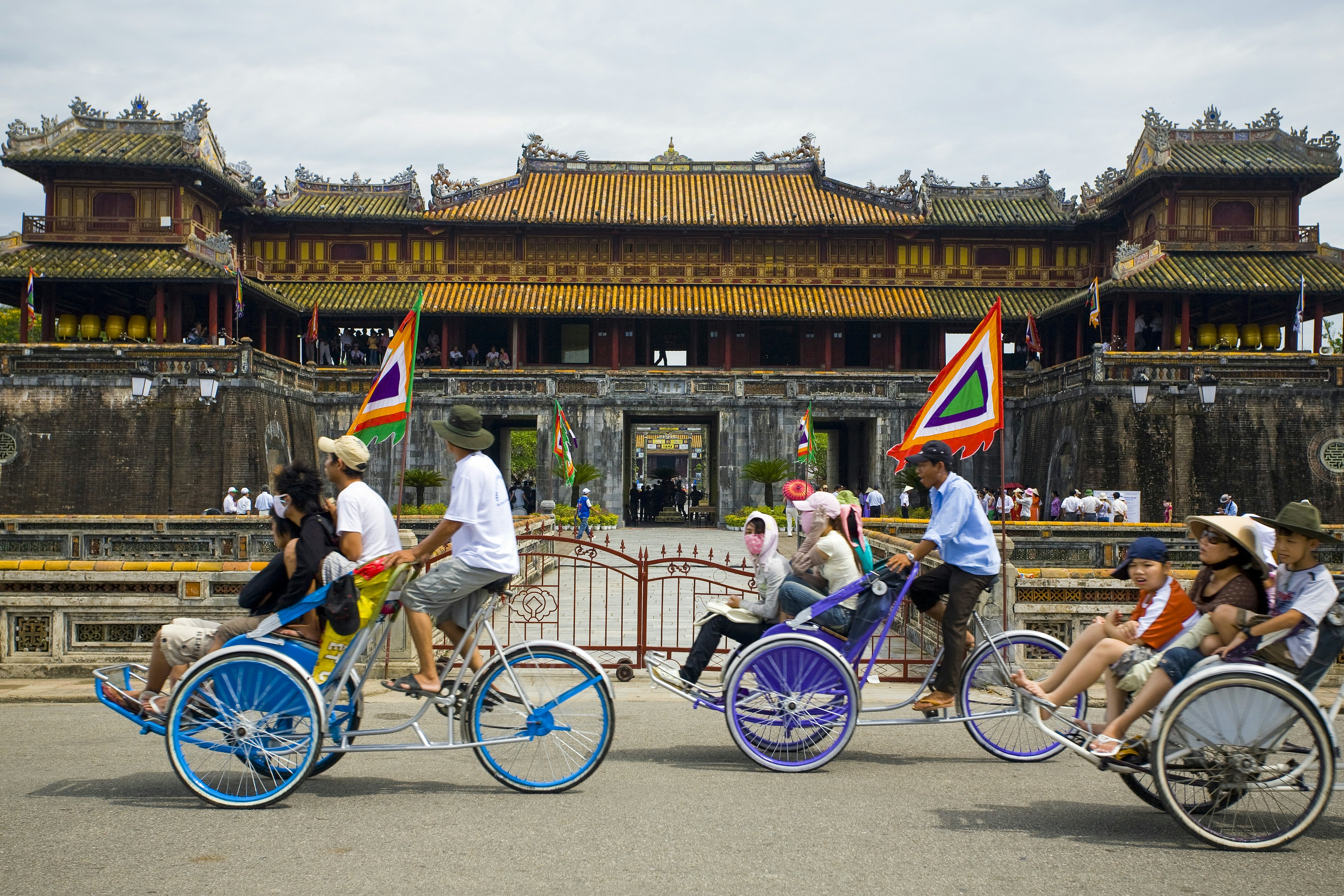
Cities are easily explored by bus, taxi and rickshaw
Buses provide inexpensive local transport in towns and cities, but routes can be confusing, and pickpockets can be a problem on crowded buses. If you prefer to travel by taxi, the companies Mai Linh and Vinasun are reputable options. Rideshares (sometimes provided by motorcycle) can be booked via Grab, Xanh SM or Be.
A more fun way to explore is by cycle rickshaw – the buggy-like Vietnamese version is known as a cyclo (although these are becoming increasingly rare). Always agree on a fare before you start your journey. If you have steady nerves, xe om (motorcycle taxis) are the fastest way to navigate city traffic, but luggage will have to go in your lap or on your back.
Accessible transportation in Vietnam
While locals are happy to help out, Vietnam is not an easy destination for travelers with disabilities.
If you prefer to travel independently, come with a travel companion, and rent a vehicle with a driver (minivans are available, and can often fit a folding wheelchair) or use open tour buses. Boats and trains, sadly, are not particularly accessible, but with assistance, you may be able to travel in “soft” class carriages without too much trouble.
Many travelers find it easier to come on a disability-friendly tour – packages are easy to find through specialist operators such as Roll in Asia and Enable Holidays.






